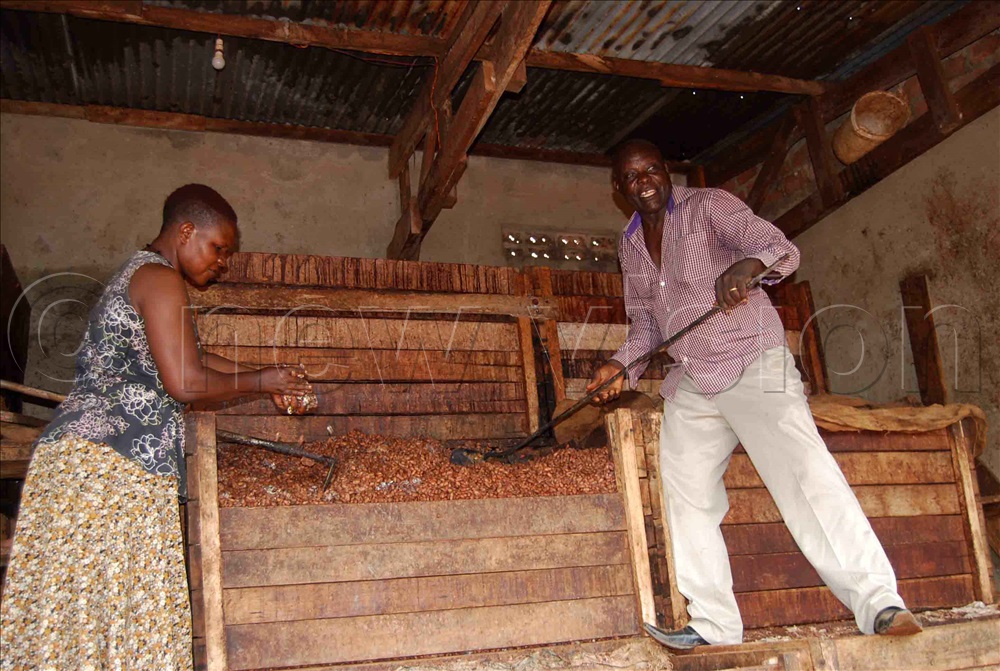By Herbert Musoke
Fermentation is an important stage in post-harvest management because this is when the beans get the chocolate aroma. This is when yeast breaks the juice to remove it from the beans as it is turned into alcohol.
“After the juice is turned into alcohol, lactic acid (in the juice) comes into play to use the alcohol to produce acetic acid, which produces heat up to about 45–50 degrees. This helps to kill the beans and turn the nutrients that would be used during germination from purple to brown.”
The fermentation process takes about seven days and you should stir or change boxes every two days to ensure that every bean gets equal heating.
“You can use a box or a hip system,” he says.
Job Chemutai, a researcher at the National Coffee Resources Research Institute in Kituuza, Mukono district explains that the hip system is the most commonly used by farmers, where they make a basin-like hole in the ground, place banana leaves on top of which the fresh cocoa beans are poured and then cover it with banana leaves and then a polythene bag to keep the heat in.
You place heavy materials such as logs or stones to keep the leaves and polythene bag in place. Every two days, you should open the hole and stir the seeds for universal fermentation.

during the fermentation period at their farm. Holes at the bottom of the boxes help drain juices. Photos by Herbert Musoke
“The leaves placed down should have holes in them to allow the juice to drain. Also, because of the heat generated, the top leaves always burn up; thus, you need to replace them before covering again,” he says.
Lwanga says for the box system, you need three to four boxes assembled in steps.
The fresh beans are then poured into the top box and then changed to the next lower box every two days as a way of stirring the beans, making it easier as the boxes have holes that let juice leak out.
Drying beans
Joseph Mulindwa, a researcher in post-harvest management, says after fermentation, farmers should not dry the beans directly under the sun because it prevents acetic acid from escaping, thus spoiling the quality of the seeds.
Therefore, first spread the beans in a drying shade to air them.
Henry Lwanga, a retired agricultural officer and respected cocoa farmer from Mindi in Kasawo, Mukono district adds that the beans should be dried on a raised platform, rack, tarpaulin, mats, or solar dryer to ensure quality. It takes between four and seven days to dry, depending on the intensity of the sunlight.
“After fermentation, the beans should have 55% moisture content. They should be dried up to 7%, the acceptable content on the world market,” he says.
Post-harvest management
Joseph Mulindwa, a researcher in the post-harvest management of coffee and cocoa at the National Coffee Resources Research Institute-Kituuza, says ripened cocoa ponds will turn yellow with a sweet smell.
“Cocoa ponds are either green or reddish while still young. When ripe, they turn yellow.
Here, farmers should use a knife or sickle to cut the ripened pod. Avoid plucking the pod as it can damage the cushions, yet it is where cocoa flowers will germinate in the next season,” he says.
Harvested pods should be placed in a tarpaulin to prevent them from getting soiled since they are food.
Value addition
Ugandan cocoa beans are mainly exported to countries that have the technologies and machinery to make chocolate bars and drinks. However, farmers can make much more from cocoa, including juice, wines and cosmetics.





